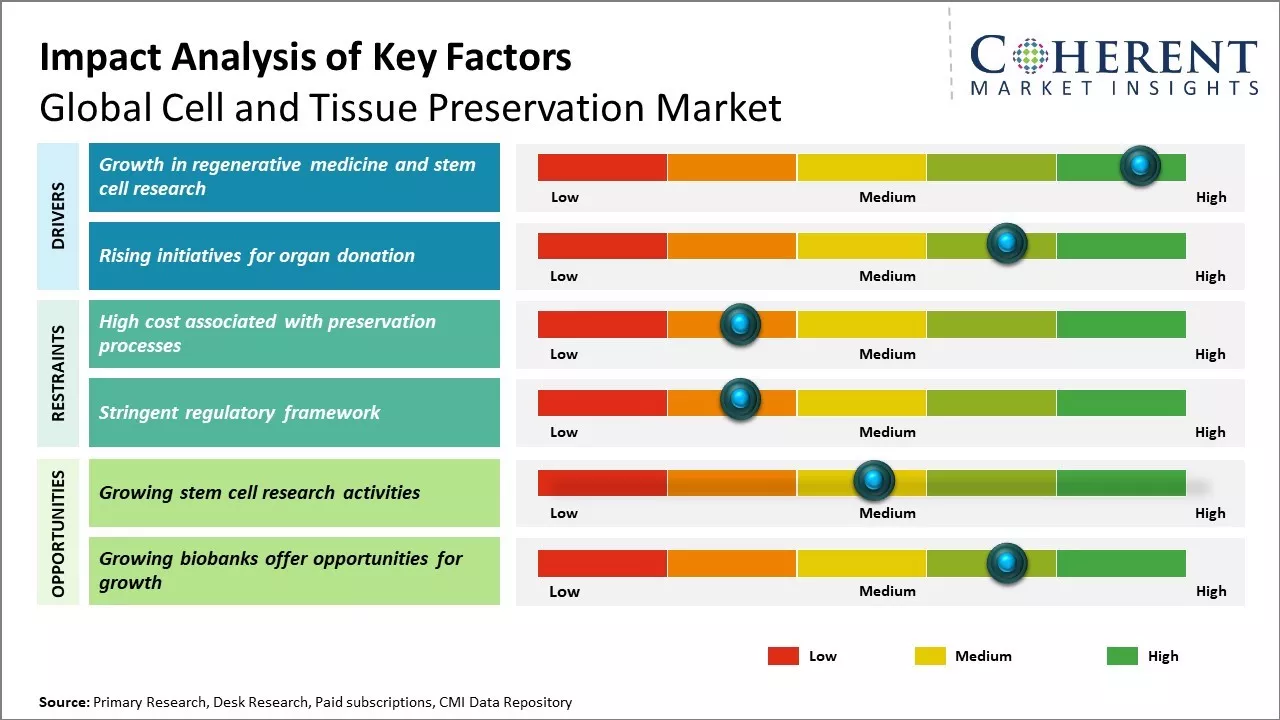Global cell and tissue preservation market is estimated to be valued at USD 5.70 Bn in 2025 and is expected to reach USD 12.22 Bn by 2032, exhibiting a compound annual growth rate (CAGR) of 11.5% from 2025 to 2032. Growing investment in stem cell and cancer research from both public and private sectors boosts focus on the development of advanced cell and tissue preservation techniques. Access to funding helps finance clinical research as well as the development of innovative biomaterials and cryopreservation solutions.

To learn more about this report, Request sample copy
The market growth is driven by increasing demand for biomaterials used for cell and tissue preservation. Key players are investing in research and development to introduce new biomaterials with improved bio stability and cryoprotective properties. Long term preservation of stem cells, organoids, and other complex tissues is an area of active research. Customized preservation media tailored for specific cell and tissue types can better address the need for high viability post-thaw.
Market Driver – Growth in regenerative medicine and stem cell research
Regenerative medicine and stem cell research offers tremendous potential for developing new treatments and ultimately cures for debilitating diseases. There has been immense progress in people’s understanding of how stem cells can be used to regenerate tissues and repair organs. This progress is fuelled by ongoing research in both academic institutions and biotech companies seeking to translate fundamental discoveries into novel therapies. The promise of regenerative medicine to treat conditions previously considered incurable captures public imagination and raising hopes worldwide. Several stem cell therapies are already in clinical trials or approved for certain applications. Hematopoietic stem cell transplantation is routinely used for blood cancers. Research is advancing on using mesenchymal stem cells to treat conditions such as cardiovascular disease and osteoarthritis by stimulating the body's innate healing responses. Other trials are exploring embryonic and induced pluripotent stem cells to develop cell replacement therapies for diseases like macular degeneration, Parkinson's, diabetes and spinal cord injuries. For regenerative medicine to become reality on a larger scale, overcoming technical challenges in stem cell processing, storage and delivery will be critical. Reliable methods are needed for isolating different stem cell types from source material like cord blood, embryonic or adult tissue in a regulated manner. Once isolated, cells must remain viable and functional after long-term preservation and storage, often in cryogenic conditions. Finally, standardized processes are required to administer the preserved cells with good engraftment and clinical outcomes. Rapid advances in cell and tissue preservation techniques can facilitate the translation of promising stem cell research into viable therapies.
Joining thousands of companies around the world committed to making the Excellent Business Solutions.
View All Our Clients